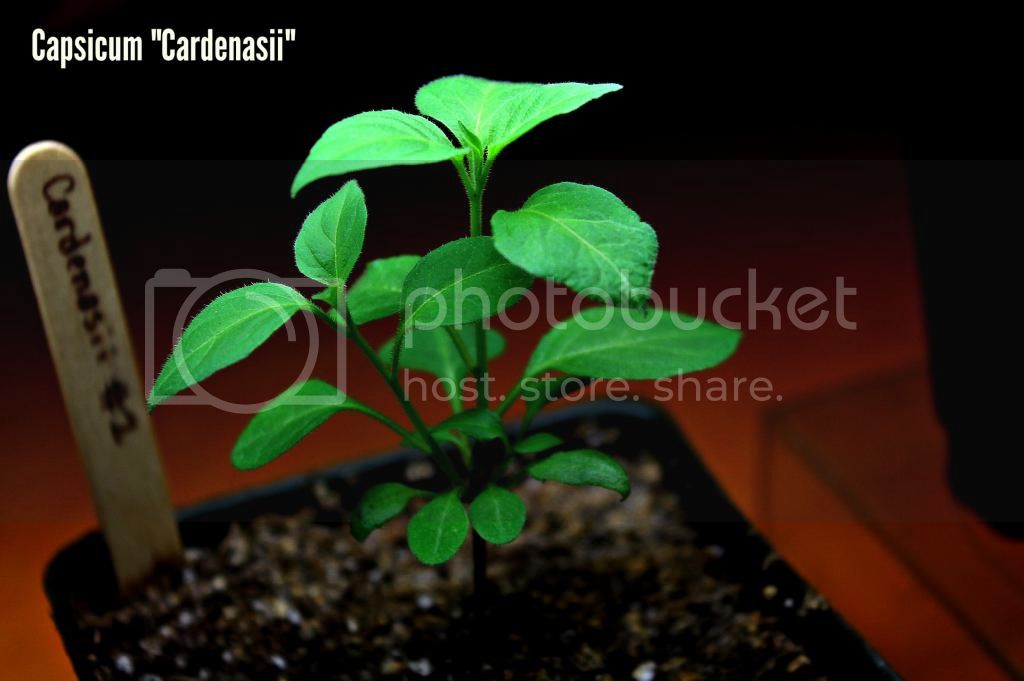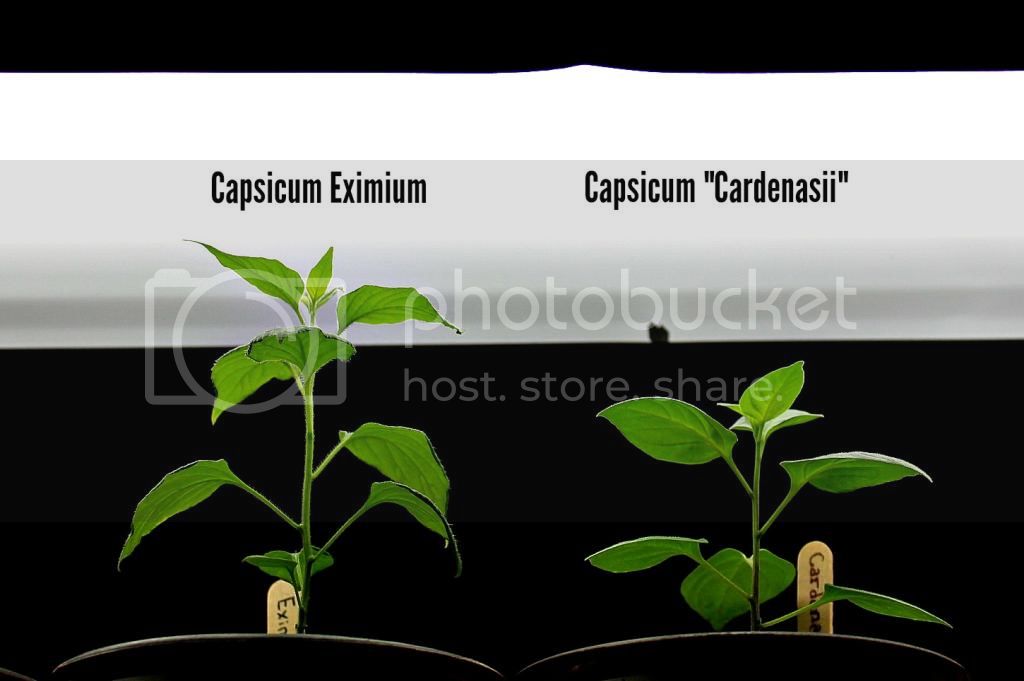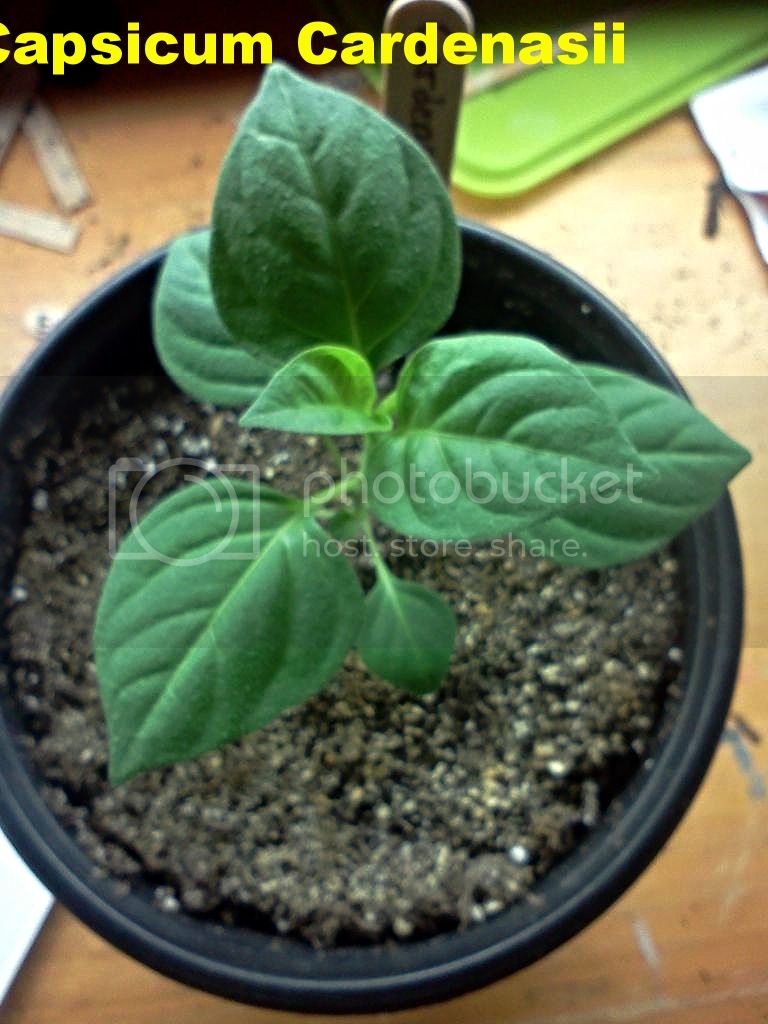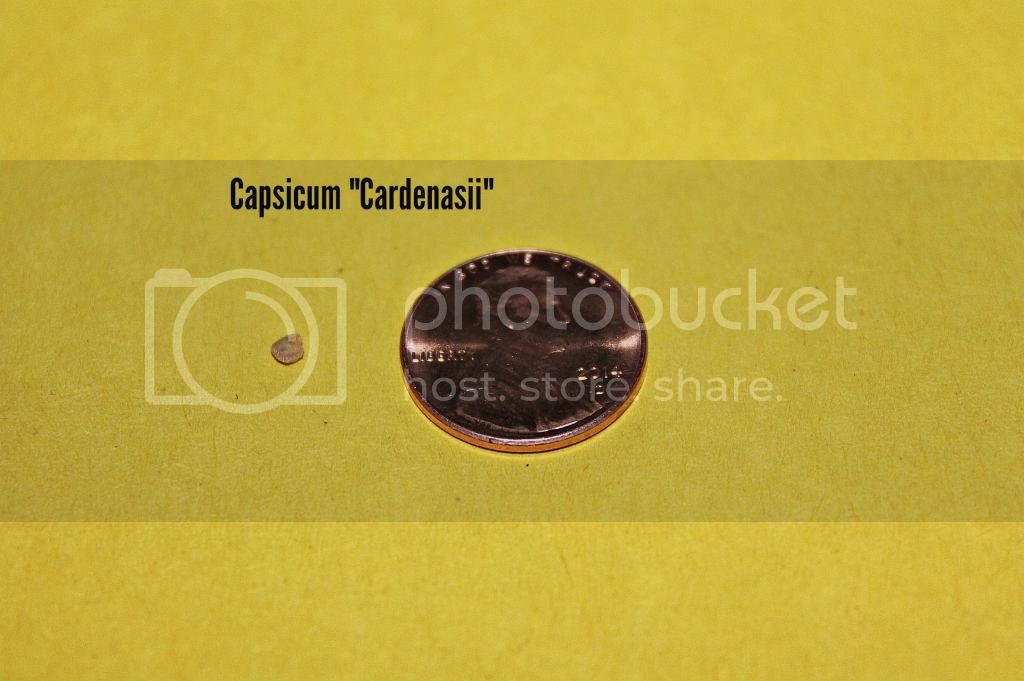This has been a very fun one to watch grow cool leaf shape and growth habit. I cant wait to see it flower and fruit.












Nigel said:Where`s cmpman1974 when you need him?!?!?!?!? Or Pr0digal_son?!?!?!?!?!?!??!
I realize you are using quotes for a reason on your cardenasii!
Chris grew CGN 20497 this year and his turned out to be a cross, almost certainly with C.pubescens. People in Italy also got a similar result. The current thinking is that the CGN 20497 in circulation is actually a Rocopica. It`s still possible that the seeds at the CGN seed bank are true C.cardenasii, but they don`t give them out, so it`s hard to say.
C.cardenasii does appear to be self-incompatible and is very prone to crossing with eximium and pubescens. I grew 2 plants from seeds taken from a true C.cardenasii plant, but both plants I got were crosses - one with pubescens, one with eximium.
Both Chris and I have spent considerable time looking for true C.cardenasii through as many people as we both know. So far, we have struck out. The guys at www.wildchilli.eu DO have the real thing, actually collected in Bolivia by them. They are not, however, giving out seeds.
Because of all this above, the vast majority that are growing "C.cardenasii" are growing a cardenasii cross. I am seriously considering a trip to Bolivia next spring, to find Capsicums in the wild and photograph them. I do not know yet whether any seeds could be collected legally, but I`m trying to find out.
Million dollar answer: people like to have things others don'tRoguejim said:
$1,000,000 question: Why would someone not make these particular seeds available?
Buy a bird down there. feed it all the peppers you want to grow. come back with the bird and wait for nature to call.Nigel said:Where`s cmpman1974 when you need him?!?!?!?!? Or Pr0digal_son?!?!?!?!?!?!??!
I realize you are using quotes for a reason on your cardenasii!
Chris grew CGN 20497 this year and his turned out to be a cross, almost certainly with C.pubescens. People in Italy also got a similar result. The current thinking is that the CGN 20497 in circulation is actually a Rocopica. It`s still possible that the seeds at the CGN seed bank are true C.cardenasii, but they don`t give them out, so it`s hard to say.
C.cardenasii does appear to be self-incompatible and is very prone to crossing with eximium and pubescens. I grew 2 plants from seeds taken from a true C.cardenasii plant, but both plants I got were crosses - one with pubescens, one with eximium.
Both Chris and I have spent considerable time looking for true C.cardenasii through as many people as we both know. So far, we have struck out. The guys at www.wildchilli.eu DO have the real thing, actually collected in Bolivia by them. They are not, however, giving out seeds.
Because of all this above, the vast majority that are growing "C.cardenasii" are growing a cardenasii cross. I am seriously considering a trip to Bolivia next spring, to find Capsicums in the wild and photograph them. I do not know yet whether any seeds could be collected legally, but I`m trying to find out.
Now that is a truly great idea!!!CAPCOM said:Buy a bird down there. feed it all the peppers you want to grow. come back with the bird and wait for nature to call.
you'd probably have to hire a guide, no? Too bad it's not the Peruvian altitude you would be dealing with. They have a certain leaf you can chew on. I hear it's quite effective at curing altitude sickness, not to mention, boosting endurance!Nigel said:I agree with you George, going to Bolivia is possibly the only way to get seeds. I am serious about going there next spring, but we`ll have to wait and see whether I can swing the trip or not. I have the GPS co-ordinates for cardenasii collection sites, as well as a few other Bolivian wild species. The problem is that Bolivia is extremely mountainous and getting around is far from straightforward. There are also very few detailed maps of Bolivia, unlike south eastern Brazil.
Most of the wild species occur at around 10-12,000 feet altitude, so there is that to contend with, as well. I have spent numerous weeks at 9,000-10,000 feet in the Rockies and probably got altitude sickness 50% of the times I was there. That is not fun at all!
I have a variety that has been floating around for a while that is not an actual Cardenasii but a Cardenasii cross that is mislabeled as Cardenasii hence the Quotations the true Cardenasii is Very rare to come by this variety has been shared for years I have even shared with a few peopleRoninCat said:maybe OP should reconsider sharing a few seeds with Nigel or some other serious grower who has a similar passion for chillies? can't imagine growing such a fascinating variety alone and thereby denying others a chance to grow it out to be much fun.. i could understand it if it was some secret cross project he was working on but this one exists naturally, no?
oh well :/
No worries, it`s stupidly complicated! I had seeds this year from a real species expert in Italy and they ended up being crosses. It`s a very tough species to keep clean and true. CGN 20497 is claimed to be C.cardenasii, but the few that have grown it out this year have found that it is a cross between cardenasii and pubescens. Whether what the CGN seed bank in Holland has is real cardenasii or not is debatable, as they have not given out seeds in a decade.RoninCat said:Ah, I didn't notice that.
I apologise for the hasty comment.
